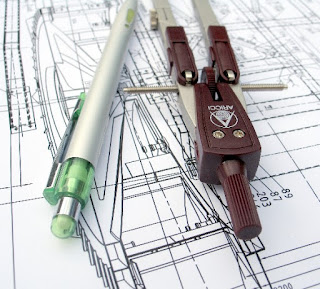Modern Math in Ancient Babylon
With the advent of modern home computers and smartphones (yes, those are also computers), it may be tempting to smirk at slide rules that were essential for computing. Those began to be invented in the fifteenth century, and were vital for the Apollo moon landings.
There was a scene in Apollo 13 where a supervisor announced a problem and scientists whipped out their slide rules and began calculating. Although they did not have a computing device like a slide rule, the folks of Old Babylon knew sophisticated computing way back when.
 |
| RGBStock / Sanja Gjenero |
The tablet was designated Si. 427, and it helped people understand P. 322. For the most part, the Western world uses a base 10 numbering system. While they knew of that in Old Babylon, these ancient tablets involved land surveying using a base 60 system! Have you heard of Pythagorean triples? Very useful in geometry and trigonometry — and surveying. Those folks were using what was actually rediscovered by Pythagoras.
Darwin's acolytes include in their evoporn the idea that ancient humans were stupid. After all, they only recently evolved from something resembling an ape, so they didn't have time to develop intelligence. Time and time again, we see this notion refuted. The Bible tells us of skills and crafts that existed near the beginning, including metallurgy. In Daniel 1:1-7, King Nebuchadnezzar instructed that some of the Hebrews were to be schooled in Babylonian arts and culture. King Neb developed and spread refined arts and sciences. Also, there's the Antikythera Mechanism from around 50 BC. The ancients were created in God's image and very intelligent.
A cuneiform clay tablet dated at 3,700-years from Babylonia, has recently been described as “one of the oldest examples of applied geometry from the ancient world.” The tablet is inscribed on one side with what appears to be a map of a field, complete with surveyor’s measurements that obey trigonometric relationships. On the reverse side is a tabulation, containing the results of the surveyor’s area calculations. The evidence demonstrates that ancient people’s understanding of mathematics “during this era was more sophisticated than previously assumed.”
. . .
Si. 427 is a remarkable tablet, dating to the Old Babylonian [OB] period 1900–1600 BC. This dating is based on comparisons of certain vocabulary found on other OB tablets. It reveals geometric and legal details about an agricultural plot of land belonging to a prominent land-owner called Sîn-bēl-apli, who is known from other OB cuneiform tablets from Sippar.
To read the rest, journey on over to "The oldest example of applied geometry in the world". As for the music video below, the first few seconds are annoying, but it gets good quite soon.